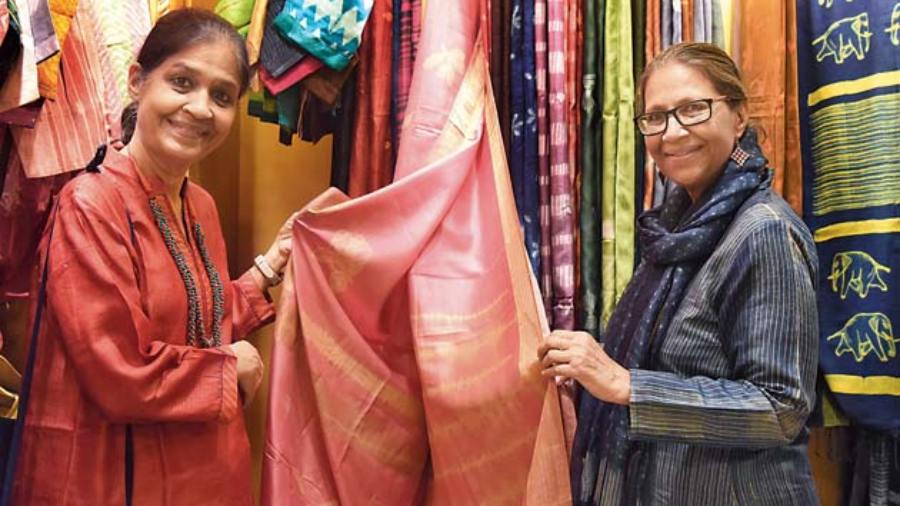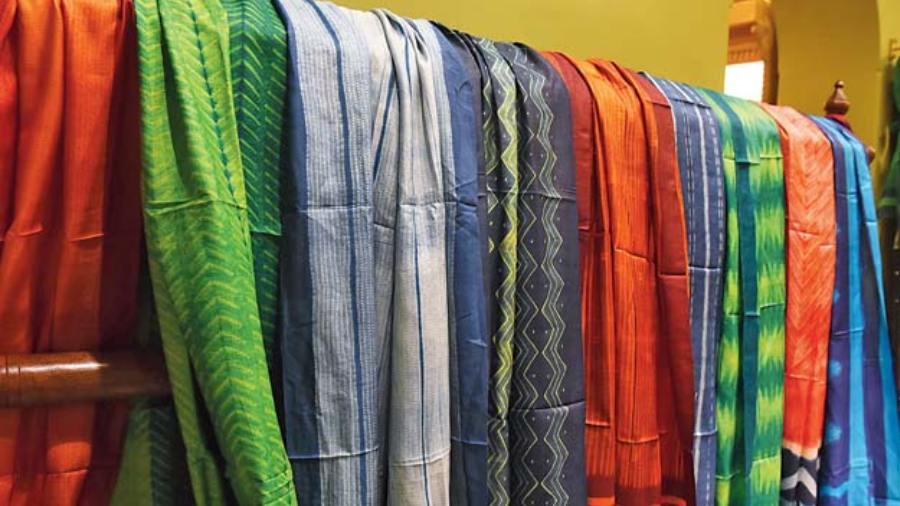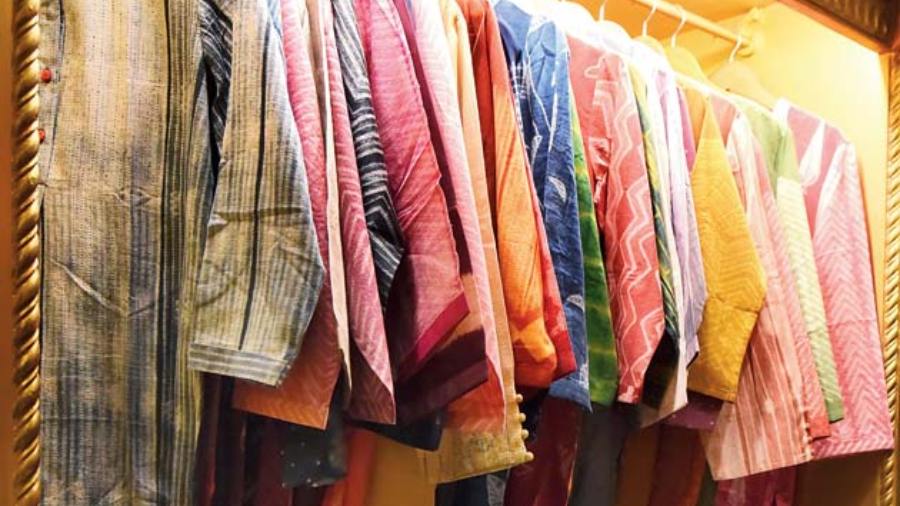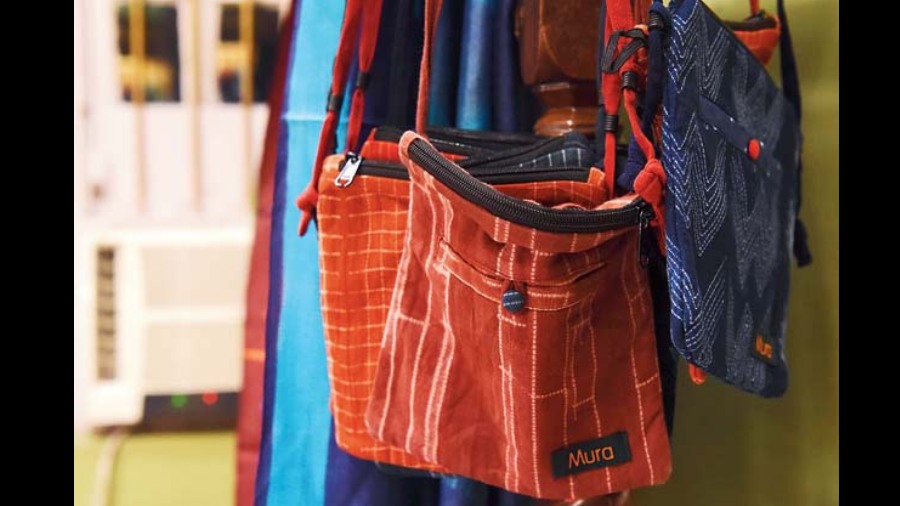The second edition of Spinning Yarns, a talk and exhibition hosted by Byloom on September 9, unveiled the story behind Mura, a premier homegrown brand that’s known for its fine shibori work in India. The Mura Collective provided a glimpse of the rich repository exhibited on the first floor of the multi-designer store. Marked by traditional technique and hours of labour and dedication, the edit featured bespoke sari, stole, dupatta, kurta, kurti and blouses in earthy shades and natural fabrics like cotton, linen, silk, Maheshwari and others. Started by sisters Kusum Tiwari and Prabha Gahtori in 2003, Mura, recipient of four Unesco’s Seal of Excellence, has adapted the Japanese textile art brilliantly with Indian fabrics and sensibilities.
The discussion that started from Mura birthing out of the creator’s desire to uplift the marginalised section veered to the various processes through which a piece of shibori fabric goes, under the strict supervision of younger sister Prabha. The duo also discussed their first commissioned piece and making a name for the brand in the Indian handloom industry with sincerity and a positive outlook.

Wearing a cotton shibori in a soothing shade of saffron by Mura, Malavika Banerjee, partner, Byloom, tells us, “The idea is to showcase different textile journey and practices across India in the store. Byloom has become a platform for people to discuss handloom. Each piece has a story and if we lose those stories we will never appreciate why we are wearing what we are wearing.” Continuing, the effervescent entrepreneur says, “The story of Mura is quite unique. They do what is essentially a foreign thing but in the most Indian way possible and with the most basic Indian string possible. It’s such a wonderful juxtaposition of an international textile practice with indigenous textile.”

Sisters Kusum and Pragya hold a pure silk Maheshwari sari with a mix of hand and machine shibori work. The sari is dotted with motifs of Arjuna tree and it is Mura’s way to celebrate the uncelebrated. “The flat weave in this sari celebrates Arjuna tree, which is not given its due importance, we feel. Hence one can find motifs of the seeds and leaves of the tree in the body of the sari and a pictographic representation of the tree in the anchal,” explains Pragya who had been a journalist with a national daily and who keeps a hawk’s eye on the various processes of shibori.

Soft and breathable, these masks are their hotsellers. Available in soothing shades of orange, blue and green, they can be mixed and matched with any ensemble.

For those who love mix-and-match, this is the section to check out. The dupattas in bright hues and striking geometric pattern of shibori will elevate your fashion.

If you are looking for some daily-wear then this section will throw ample options for you. Non-fussy tailoring and comfortable to the core, these kurta and kurtis will keep you at ease during pandal-hopping this Puja.

A double-coloured sari takes around four-five days to produce and this section has some gorgeous shibori saris for the festive season. From red silk-linen sari to a light pink Maheshwari sari and more, this section will leave the handloom sari lover spoilt for choice. There are also blouses with simple tailoring to go with your choice of sari.

Another hot pick for gifting are these slings that are compact, stylish and most importantly, functional.
Pictures: B. Halder